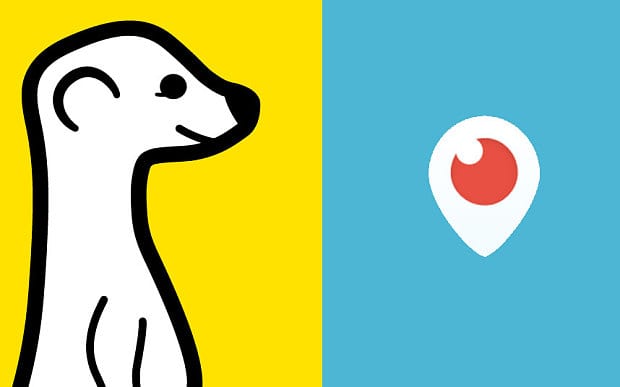There’s been plenty of buzz about live streaming in the digital marketing world of late. Not quite sure what the latest apps on the market are and what they do? Well, you’ve come to the right place…
Success of live streaming apps
The biggest live streaming apps are Meerkat and Periscope, which allow users to live stream video content from their mobile device and share this in real-time on Twitter. It’s still early days and pretty hard to tell just how popular apps like these will be. There was a massive hype surrounding Meerkat when it first launched in February of this year. Nearly two million people used the app within the first month, including high-profile celebs like Madonna, Arnold Schwarzenegger and Jimmy Fallon. Periscope, launched by Twitter a few weeks later, received a whopping one million users in its first 10 days.
Differences between Meerkat and Periscope
With both apps, viewers can comment on the video, see how many other people are also watching and like the content, as they would on Facebook or Instagram. But there are also some important differences between the two. Meerkat automatically tweets a link to your video once you start recording while there is a convenient sharing opt-in option for Periscope. All Periscope broadcasts are saved for 24 hours while Meerkat streams cannot be viewed online afterwards.
Advantages of live streaming
Digital marketing gurus predict that live streaming will drastically change the way we connect with each other and experience events, such as sports games, lectures and gigs. Using live streaming apps, celebrities and individuals can transmit breaking news, bypassing traditional media outlets and changing the way we access information.
Live streaming holds a lot of potential in the world of PR and digital marketing. It enables companies to spread the word about what they do and promote exclusive footage of trade shows, conferences and demonstrations. People can experience exactly what is going on in real-time without following a specific hashtag or refreshing a Facebook page for updates. It’s no wonder that Redbull, Mashable and Starbucks have already jumped on the bandwagon!
Copyrighted content
The benefits for marketers are obvious but so too are the dangers, the big question being ‘are you capturing copyrighted content?’. Both apps have banned the recording of copyrighted material, such as a new film in the cinema, but there are plenty of grey areas. Different legal restrictions will be in place depending on the event, venue and artist. For example, some artists have banned the use of mobile phones at their gigs while Katy Perry has embraced live streaming, even creating her own #Perryscope.
One also needs to be wary of what is being streamed and how this affects the audience present at an event. What if you spend $500 for a conference ticket and there’s someone in the room streaming the sessions to a large audience for free? It’s easy to see how this could lead to complaints and some very unhappy campers, which in turn could damage your company’s image and have a very negative effect.
Privacy issues
There are also concerns regarding individual privacy. Just think – your daily movements could be streamed completely unbeknownst to you. If an individual is in a public place then they have no reasonable expectation of privacy, once any material garnered is not used for commercial purposes. So if you’re broadcasting at an event and want to use that footage to promote a product or service you need to make sure everyone featured signs a consent form first.
Our advice – embrace the change but be careful. Make sure you double-check that you are not breaking any laws when broadcasting content, particularly on Meerkat where social sharing is obligatory. Streaming in public places is generally fine but don’t violate anyone’s privacy by using material without their consent. Believe us; a law suit will do nothing for your brand’s image!
How do you feel about live streaming apps? Tweet us @TravelMedia_ie and let us know.

